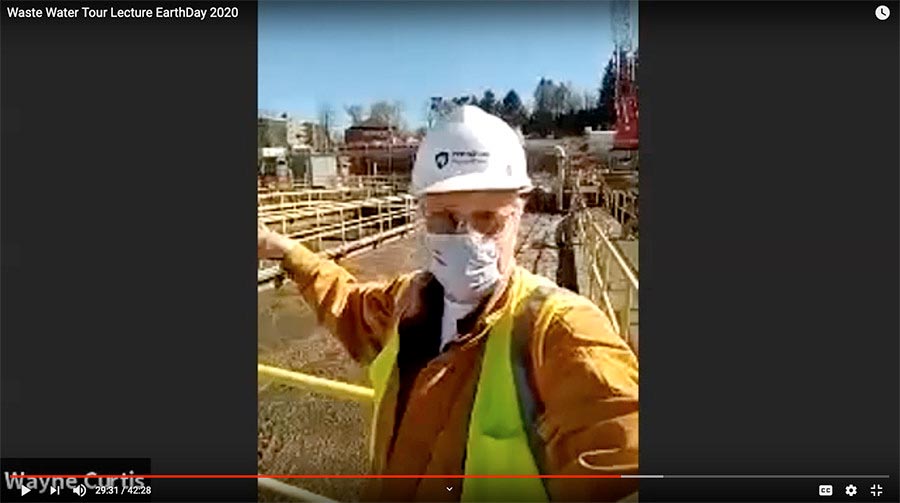
In this screen capture of a YouTube video, Wayne Curtis, professor of chemical engineering, takes his students on a virtual tour of a wastewater treatment plant. IMAGE: PENN STATE
Chemical engineer brings real-world experiences to students virtually
10/17/2020
By Gabrielle Stewart
UNIVERSITY PARK, Pa. — For Wayne Curtis, professor of chemical engineering at Penn State, an emphasis on remote learning modes has given him a new appreciation and application for a teaching tool he’s used — and created — extensively in the past: educational videos.
Curtis, who has produced his own educational videos for three decades, is collaborating with Nadia Waterton, a senior majoring in digital multimedia design, to elevate the production quality of educational videos for a variety of uses in Curtis’s lab and classroom. Waterton is using her skills in videography, Curtis said, to edit and compile videos shot by Curtis.
The videos, many of which can be found on Curtis’s laboratory training webpage and YouTube channel, are field trip virtual tour guides, lectures or demonstrations. With illustrated diagrams, models and real-world examples, complex learning topics are distilled for students to easily retain the information, Waterton said.
One video for Curtis’s CHE 438 course, Bioprocess Engineering, was created using footage from a 2019 class field trip. Watching the video allowed students who could not attend to “visit” several locations, including the Energex Pelletized Fuel Plant in Port Royal; ABEC biotechnology manufacturing facility in Bethlehem; the Institute of Marine and Environmental Technology Aquaculture Research Center in Baltimore, Maryland; the Jefferson Institute for Bioprocessing in Spring House and other research and biomanufacturing facilities.
Creating videos based off of these experiences can familiarize students with the applications of their studies, Curtis said.
“For example, I can supplement a homework assignment on impeller designs with a video from an impeller manufacturing facility,” Curtis said. “Supplying students with equations, images and diagrams cultivates their understanding of the topic, but videos cultivate appreciation for the real-life applications of the work they’re doing.”
In using videos as an educational tool to acquaint students with tangible examples of work in their discipline, Curtis hopes to assist students in bridging the gap between academic and industry careers. In one video recorded as a Zoom lecture, Curtis leads a tour of Penn State’s Wastewater Treatment Plant, supplementing his footage with diagrams and photos as he explains how all of wastewater management relates to oxidation and nutrient cycles, which are basic concepts for his class.
For Waterton, who aspires to work in animation as a digital multimedia designer following her graduation, developing the videos with Curtis has served as an opportunity to gain experience in visual communication.
“Creating videos for the Curtis Lab has given me an opportunity to build on my technical and critical thinking design skills,” she said. “It’s been exciting to see my work contribute to educating others in disciplines very different from my own.”



